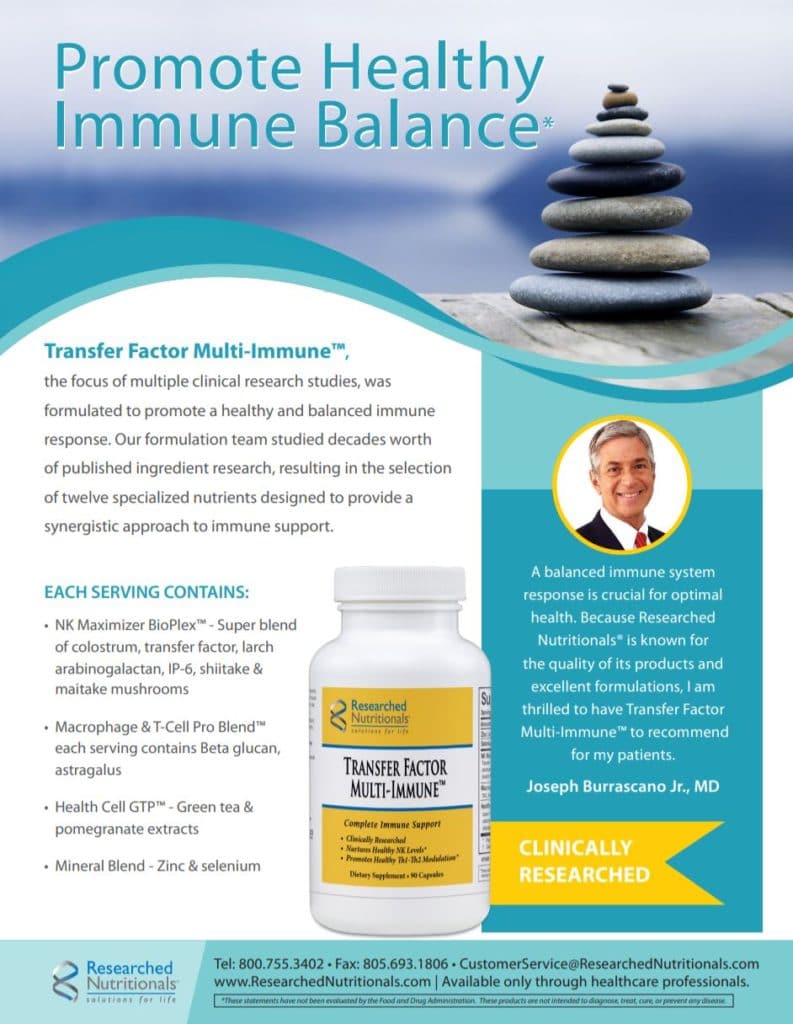…article continued:
Neuro-Inflammation
Most patients with fatiguing illnesses will have some degree of neuroinflammation. At the root of neuroinflammation are microglial cell overactivation and chronic stimulation of the innate immune system. Increases in blood brain barrier permeability can continue to stimulate microglial cells through ongoing exposure to antigens, toxins, and mast cells. Blood brain barrier permeability can be increased by inflammatory cytokines such as MMP-9 and TGF-beta, which can create a vicious positive feedback loop.
Low dose naltrexone can be very useful in addressing microglia cell activation. It can block TLR 4 receptors from activation microglia, increase endogenous opioid growth factors, and decrease inflammatory cytokines, including TGF beta. The effects often can take one to two months. Palmitoylethanolamide (PEA) can take two to four weeks to fully realize anti-inflammatory effects.
For patients who need a more rapid anti-inflammatory action, we will use a nasal spray compounded formula of Synapsin (ginsenoside RG3 and nicotinamide riboside), which can decrease microglial cell activated inflammation and neural cell apoptosis.
The combination of resveratrol and curcumin has been shown to increase NRF2 and to decrease TGF-Beta and MMP-9. Specialized pro-mediators, vitamin D, and bioflavonoids such as luteolin can also reduce neuro-inflammatory markers. Cytoquel® is a useful nutraceutical blend containing curcumin, resveratrol, tocotrienols, n-acetylcysteine, and epigallocatechin gallate, which has been associated with reduction of multiple inflammatory markers, including MMP-9 and fibrinogen.
In patients where toxins (e.g., mold, heavy metals) are a contributor, there can be clinical exacerbation of neurologic issues if there is a significant blood brain barrier permeability while they are being detoxified. Blood brain barrier permeability can be directly assessed through a serum S100B (available through Mayo Clinic Labs) or a Cyrex 20.
A common co-morbid contributor of neuro-inflammation that is often overlooked is iron overload, which can be measured with ferritin and iron/TIBC. In a study of patients with cognitive issues over the age of 60, more than 10% had iron overload issues. Therapeutic phlebotomy is effective at addressing this issue.
If patients are not responsive to treatments for neuroinflammation or the patient demonstrates concurrent psychiatric symptoms, a work-up for neurologic autoimmunity may be in order. Mayo Clinic Labs has very thorough autoimmune encephalopathy panels, and an alternate option is Cyrex 5. Neurologic antibodies themselves can be destructive to neurons unlike most autoimmune antibodies.
Neurodegeneration and atrophy are the cumulative result of neuroinflammation and mitochondrial insults (e.g., prolonged antibiotic treatments). Treatments to address hypometabolism and mitochondria efficiency will often get better results if other issues are addressed first. For example, the use of vasoactive intestinal peptide is reserved until the end of the Shoemaker protocol for CIRS. Other mitochondrial support protocols such as NADH and CoQ10 will usually get improved results if saved for the end.
Conclusion
Neurocognitive slowing, reduced executive function, cognitive fatigability, and cognitive post exertional malaise may be the most limiting aspects of fatiguing illnesses. It is a primary reason why patients with these conditions are unable to succeed in school or sustain employment. Specifically assessing and treating these impairments as part of a comprehensive plan for the fatiguing illness is likely to result in improved outcomes.
References
- Afrin, L. B. et al. Mast cell activation disease: An underappreciated cause of neurologic and psychiatric symptoms and diseases. Brain Behav Immun. 2015; 50:314 321
- Alluri H, et al. Melatonin Preserves Blood-Brain Barrier Integrity and Permeability via Matrix Metalloproteinase-9 Inhibition. PLoS One. 2016;11(5):e0154427.
- Bredesen D, et al. Reversal of Cognitive Decline: 100 patients. J Alz Disease and Parkinsonism. 2018 (8): 450.
- Cook DB, et al. Neural Consequences of Post-Exertion Malaise in Myalgic Encephalomyelitis/Chronic Fatigue Syndrome. Brain Behav Immun. 2017 Feb 16.
- Daly S, et al. Hyperbaric Oxygen Therapy in the Treatment of Acute Severe Traumatic Brain Injury: A Systematic Review. J Neurotrauma. 2018;35(4):623 629.
- Derada Troletti C, et al. Molecular alterations of the blood–brain barrier under inflammatory conditions: The role of endothelial to mesenchymal transition. Biochim Biophys Acta – Mol Basis Dis. 2016;1862(3):452-460.
- Di Filippo M, et al. Mitochondria and the Link Between Neuroinflammation and Neurodegeneration. Zhu X, Beal MF, Wang X, Perry G, Smith MA, eds. J Alzheimer’s Dis. 2010;20(s2): S369-S379.
- Gualtireri T, Johnson LG, Reliability and validity of a computerized neurocognitive test battery, CNS Vitals Signs. Archives of Clinical Neuropsychology. Oct 2006, 623-643.
- Jerneren F, et al. Brain atrophy in cognitively impaired elderly: the importance of long-chain omega-3 fatty acids and B vitamin status in randomized controlled trial. Am J Clinic Nutr. 2015 July; 102(1):215-21.
- Haas HL, Sergeeva OA, Selbach O. Histamine in the nervous system. Physiol Rev. 2008; 88: 1183–1241.
- Hamilton DE, Jensen GS. Pain reduction and improved vascular health associated with daily consumption of an anti-inflammatory dietary supplement blend. Journal of Pain Research. 2019:12. 1497-1508.
- Hyatt, KH, Jacobson LB, Schneider VS. Comparison of 70 degrees tilt, LBNP, and passive standing as measures of orthostatic tolerance. Aviation, Space, and Environmental Medicine. 1975;46(6), 801-808. PMID: 1156287
- Joo SS., et al. Prevention of Inflammation-Mediated Neurotoxicity by Rg3 and Its Role in Microglial Activation. Biological & Pharmaceutical Bulletin. 2008;31(7): 1392-1396.
- Kempuraj D, et al. Neuroinflammation Induces Neurodegeneration. J Neurol Neurosurg spine. 2016;1(1). PMID: 28127589
- Kimura K, et al. L-Theanine reduces psychological and physiological stress responses. Biological Psychology. 2007;74(1), 39-45.
- Mueller C, et al. Evidence of widespread metabolite abnormalities in Myalgic encephalomyelitis/chronic fatigue syndrome: assessment with whole-brain magnetic resonance spectroscopy. Brain Imaging Behav. January 7, 2019.
- Nakatomi Y, et al. Neuroinflammation in Patients with Chronic Fatigue Syndrome/Myalgic Encephalomyelitis: An ¹¹C-(R)-PK11195 PET Study. J Nucl Med. 2014 Jun;55(6):945-50.
- Oussalah A, et al. Association of TCN2 rs1801198 c.776G>C polymorphism with markers of one-carbon metabolism and related diseases: a systematic review and meta-analysis of genetic association studies. Am J Clin Nutr. 2017;106(4):1142-1156.
- Parkitny L, Younger J. Reduced Pro-Inflammatory Cytokines after Eight Weeks of Low-Dose Naltrexone for Fibromyalgia. Biomedicines. 2017;5(4):16.
- Persson K, et al. Comparison of automated volumetry of the hippocampus using NeuroQuant® and visual assessment of the medial temporal lobe in Alzheimer’s disease. Acta radiol. 2018;59(8):997-1001.
- Shan ZY, et al. Neuroimaging characteristics of myalgic encephalomyelitis / chronic fatigue syndrome (ME/CFS): a systematic review. J Transl Med. 2020 Sep 1; 18(1):335.
- Shoemaker RC, House D, Ryan JC. Structural brain abnormalities in patients with inflammatory illness acquired following exposure to water-damaged buildings: a volumetric MRI study using NeuroQuant®. Neurotoxicology and Teratology. 2014 Sep-Oct;45:18-26.
- Van Campen CMC, et al. Cerebral blood flow is reduced in ME/CFS during head-up tilt testing even in the absence of hypotension or tachycardia: A quantitative, controlled study using Doppler echography. Clinical Neurophysiology Practice. 5(2020) 50-58.
- Wilkins HM, Swerdlow RH. Relationships Between Mitochondria and Neuroinflammation: Implications for Alzheimer’s Disease. Curr Top Med Chem. 2016
- Xie L, et al. Sleep Drives Metabolite Clearance from the Adult Brain. Science. 18 Oct 2013; 342 (6156): 373-377.
- Yamamotoa N, et al. VEGF and bFGF induction by nitric oxide is associated with hyperbaric oxygen-induced angiogenesis and muscle regeneration. Nature Scientific Reports. 2020;10; 2744.
- Zare-Shahabadi A, et al. Autophagy in Alzheimer’s disease. Rev Neurosci. 2015;26(4):385-395.

Craig Tanio, MD, MBA, FACP, IFMCP is the CEO and co-founder of Rezilir Health, a South Florida-based medical group that specializes in addressing complex chronic conditions, including neurodegenerative, autoimmune, toxins and chronic infections. Rezilir Health was recently listed in the 2020 Inc 500 as one of the fastest growing privately held companies in the United States. Craig’s career has been devoted to driving health care innovation in a variety of roles, including as a partner at McKinsey and Company where he worked with international health systems and health insurance companies, the Chairman of the Maryland Health Care Commission, and the Chief Medical Officer of JenCare, a national primary care group that managed global capitation and delivered care for high-risk Medicare Advantage patients.
Craig is currently an assistant professor of medicine at the Johns Hopkins School of Medicine. He received his MD from the University of California, San Francisco, his MBA from the Wharton School and did his internal medicine residency at the Hospital of the University of Pennsylvania where he was Chief Medical Resident and a Robert Wood Johnson Foundation Clinical Scholar.





